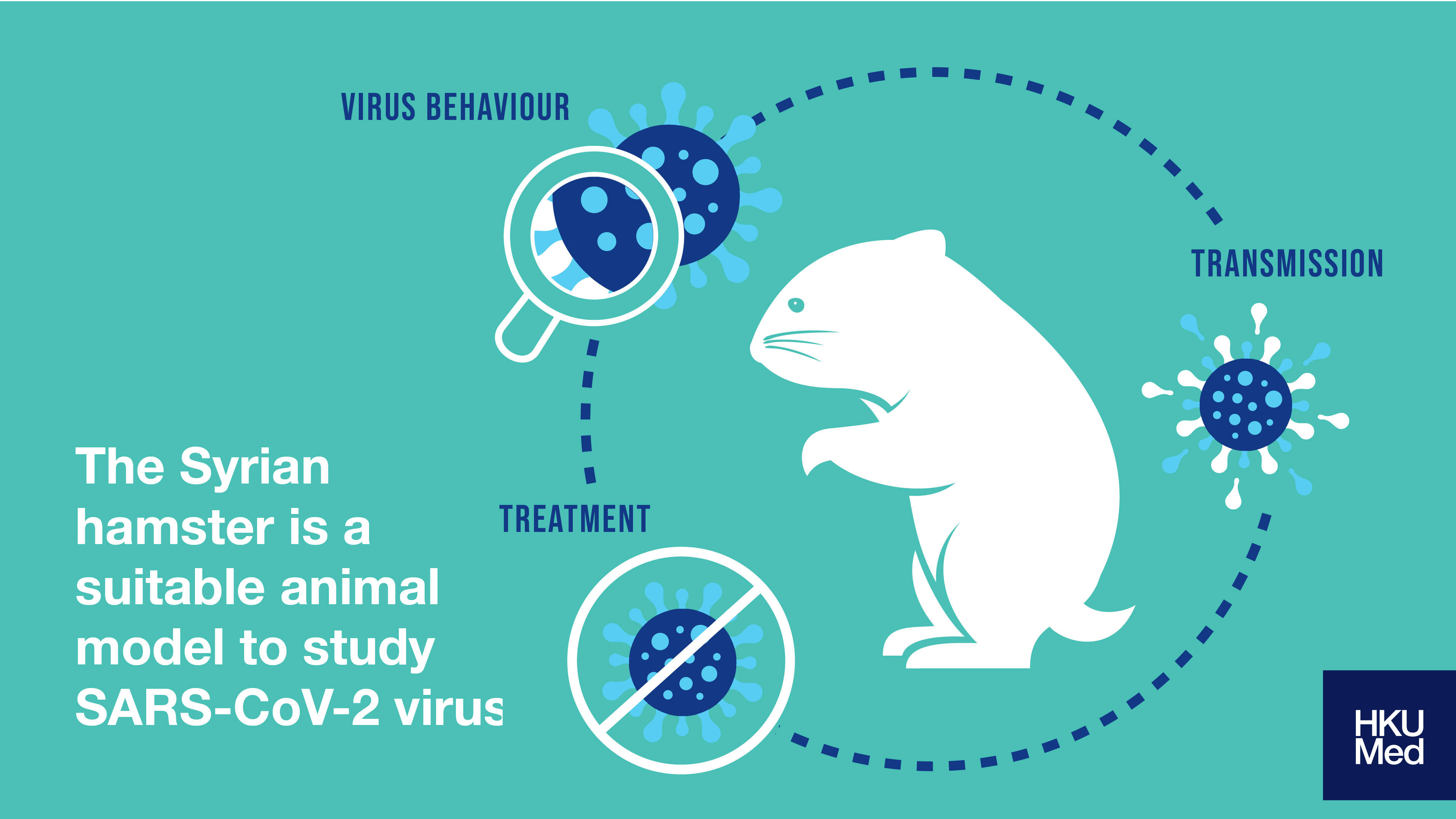The golden Syrian hamster (native to northern Syria and southern Turkey) can be infected with the SARS-CoV-2 virus, making it a useful animal model to study how the virus behaves, spreads and might be treated. The way the virus enters the cells of the hamster is very similar to the way the virus enters humans and, once infected, these hamsters show similar symptoms and patterns of disease as in humans.
Key takeaways from study:
- Infected hamsters lost weight, had faster breathing and were less active 2 days after infection
- The symptoms were most severe 6 days after infection
- The lung and intestinal tissues of the hamsters were damaged by the virus
- The hamsters’ immune systems produced large quantities of antibodies in response to the infection
- Infected hamsters were able to spread the virus to non-infected, healthy hamsters when they were kept close together
- More virus was found in the nose than in the lungs of the hamsters
- All hamsters started to recover 7 days after infection
The symptoms and disease caused by SARS-CoV-2 in golden Syrian hamster were very similar to that in humans, making it a highly suitable animal model for studying this novel virus.
To read the original article published in Clinical Infectious Diseases, click here.
